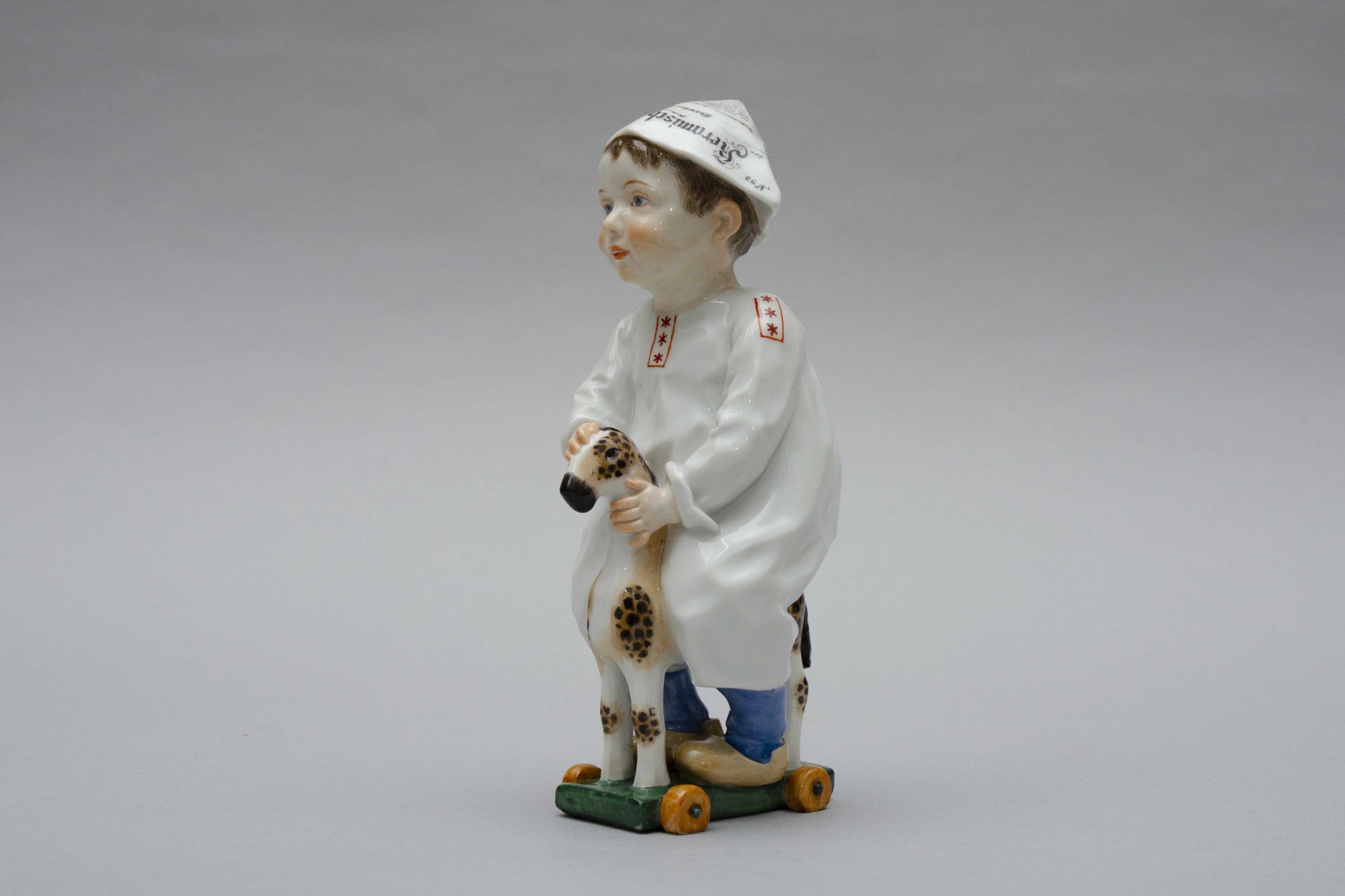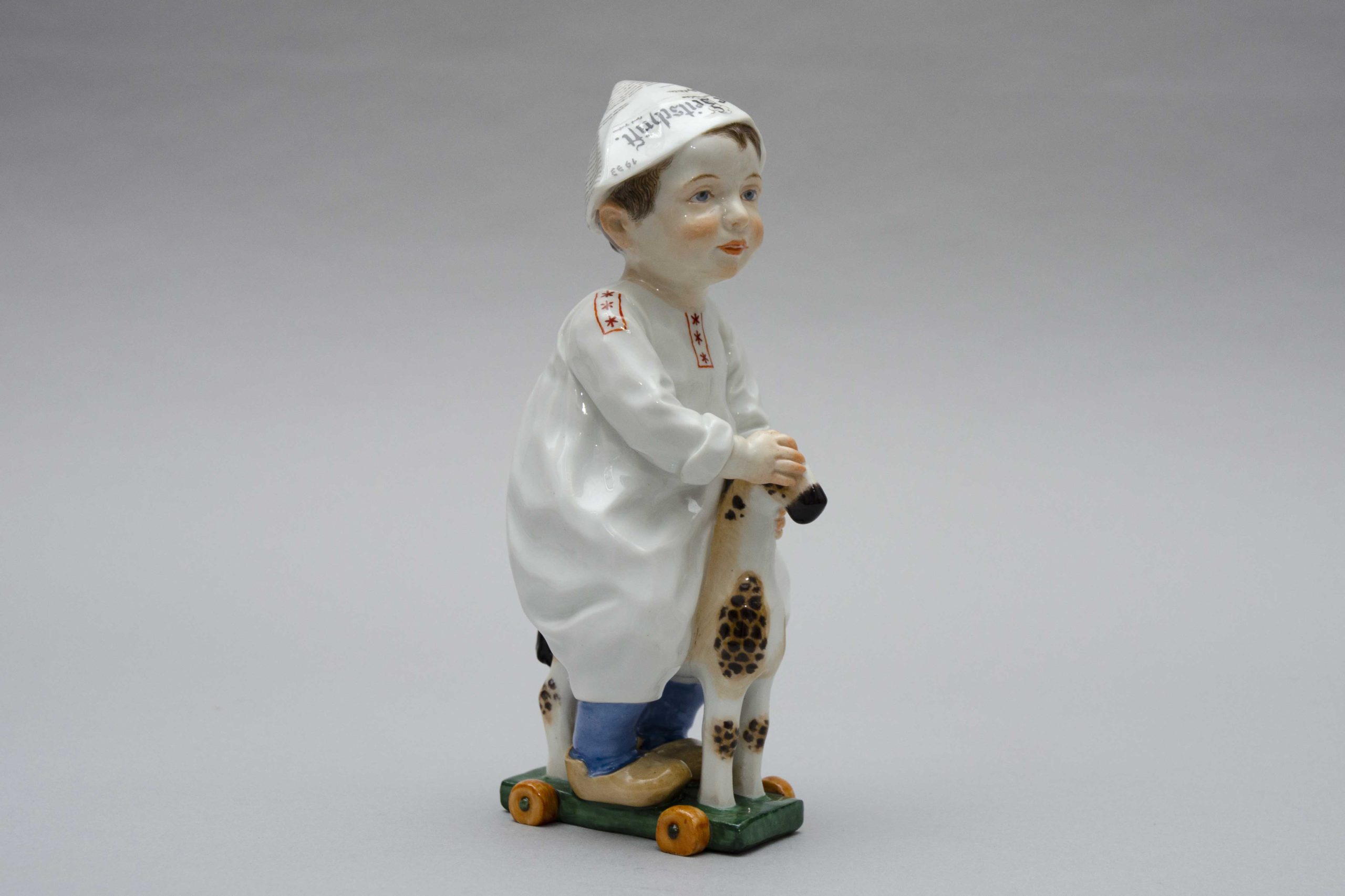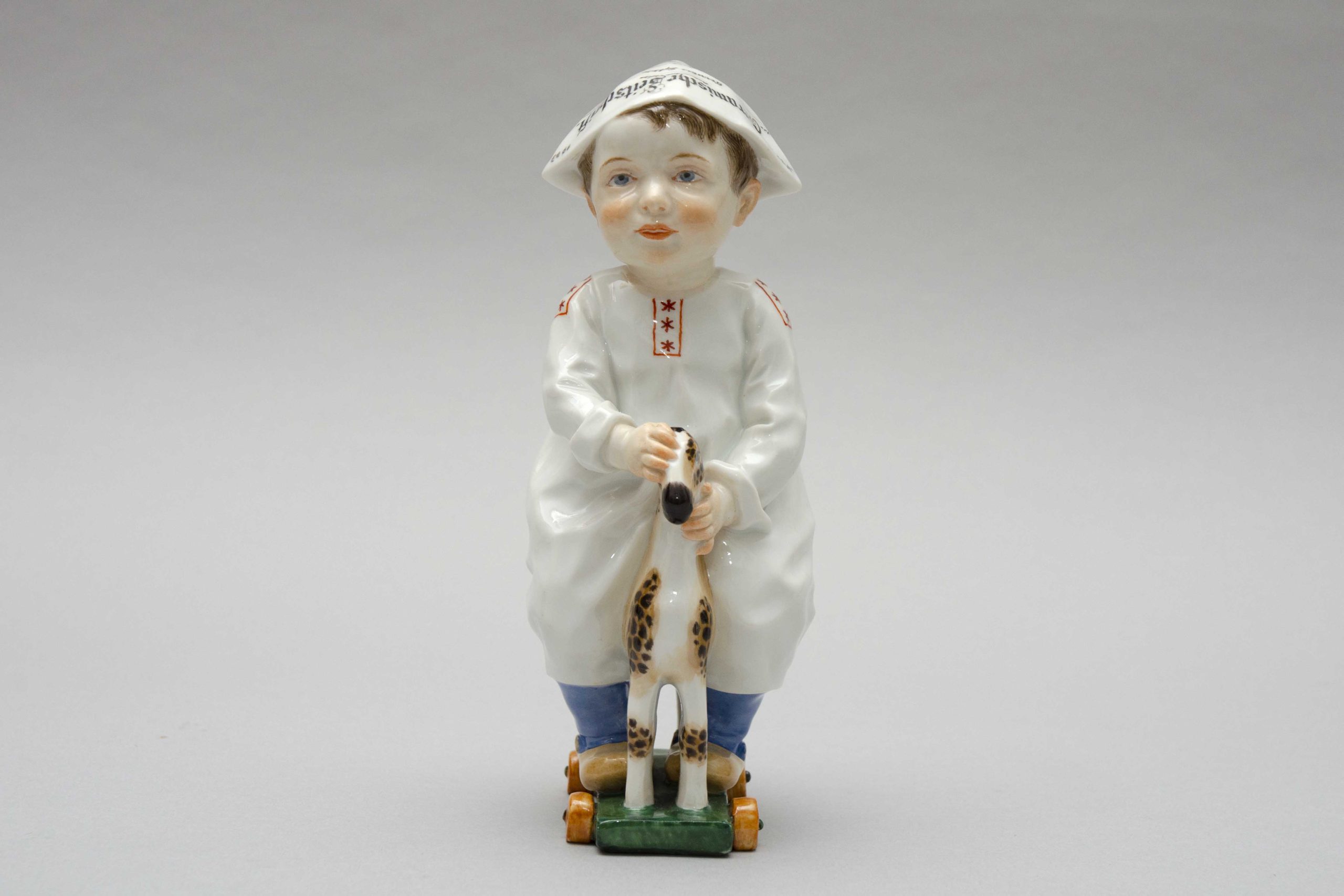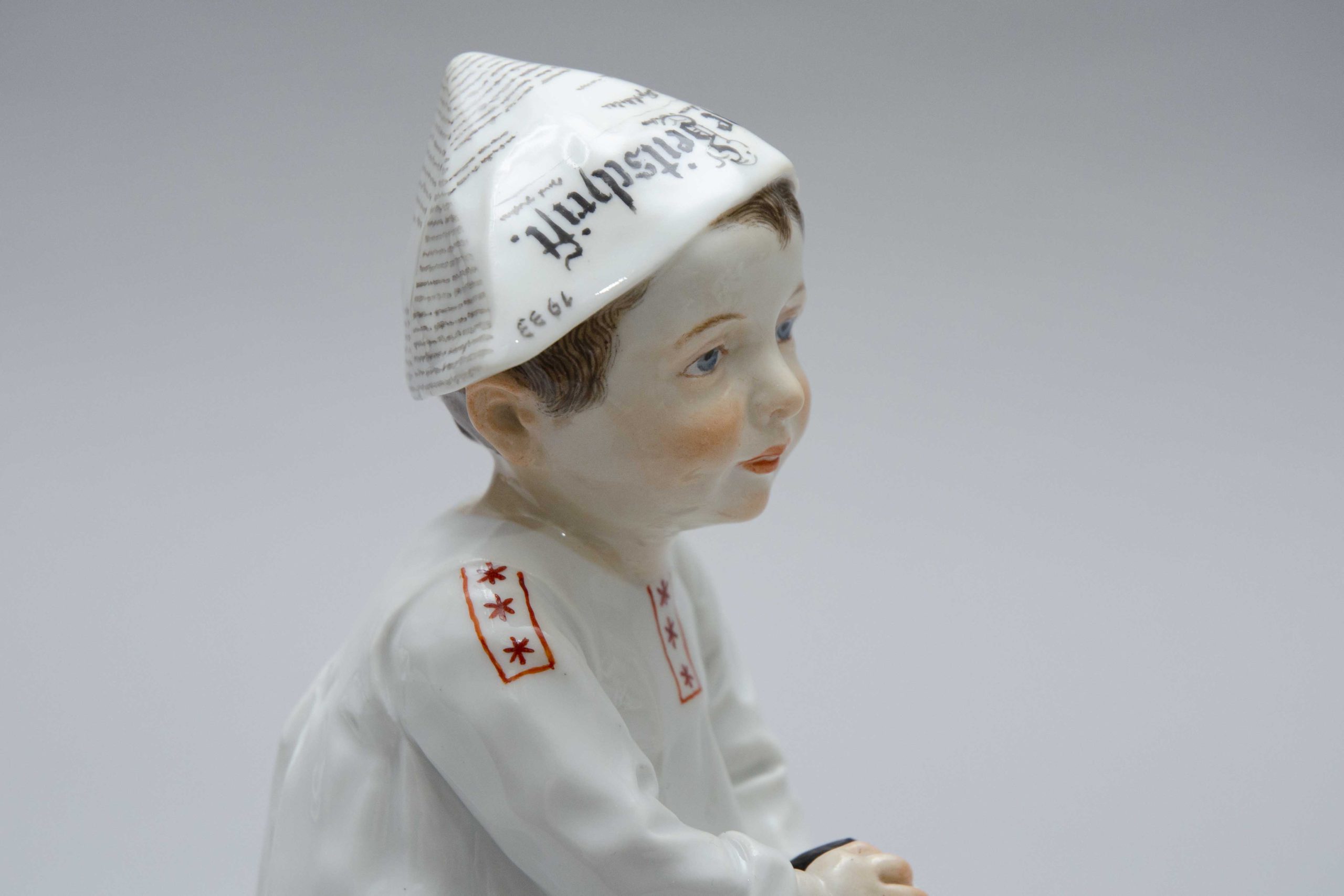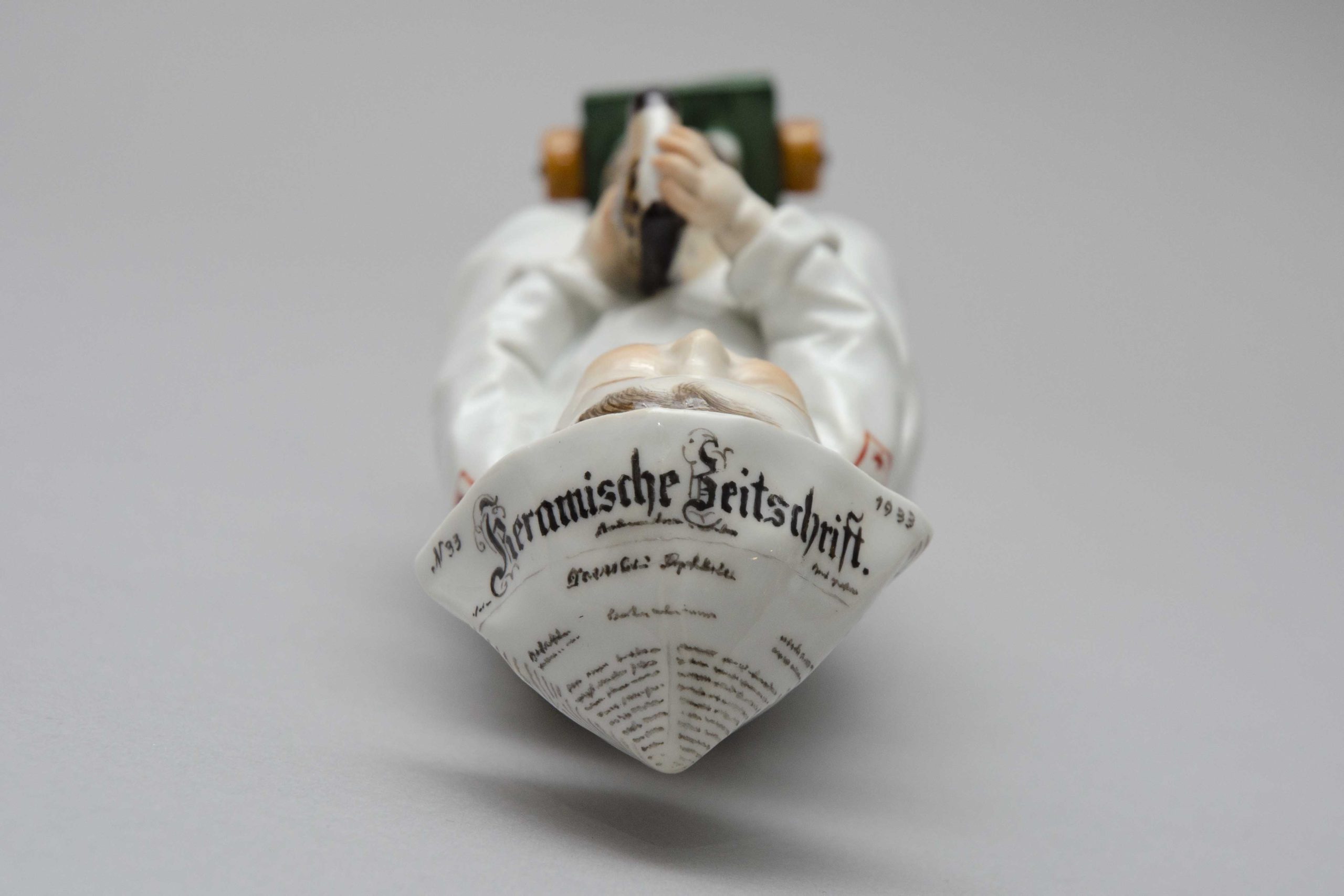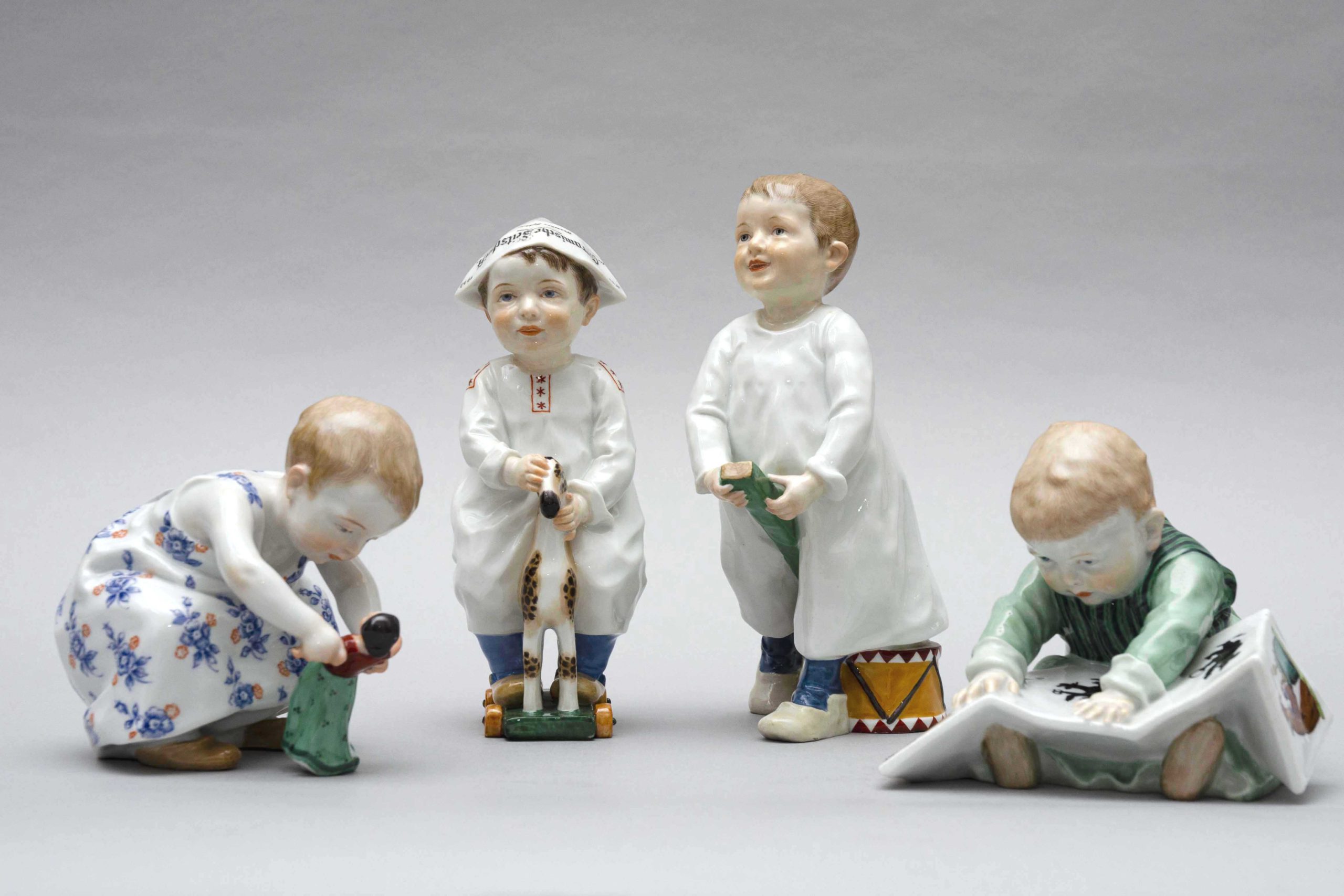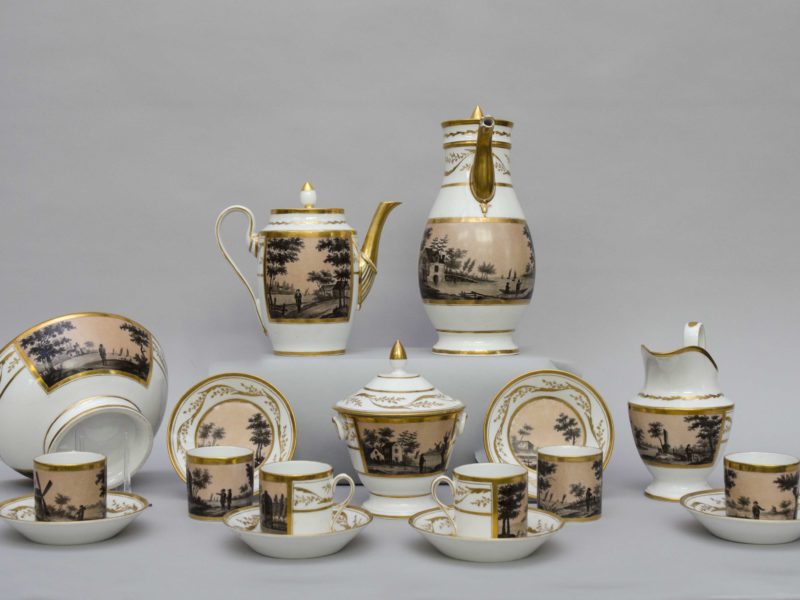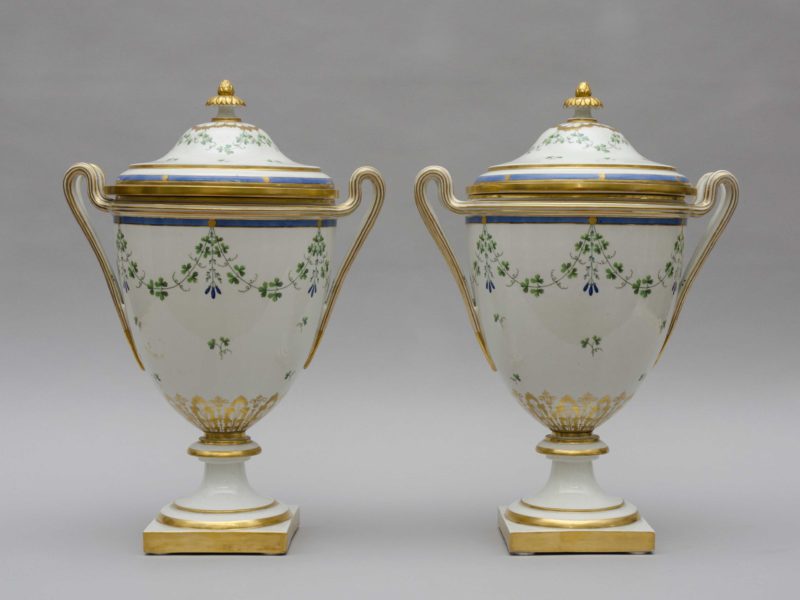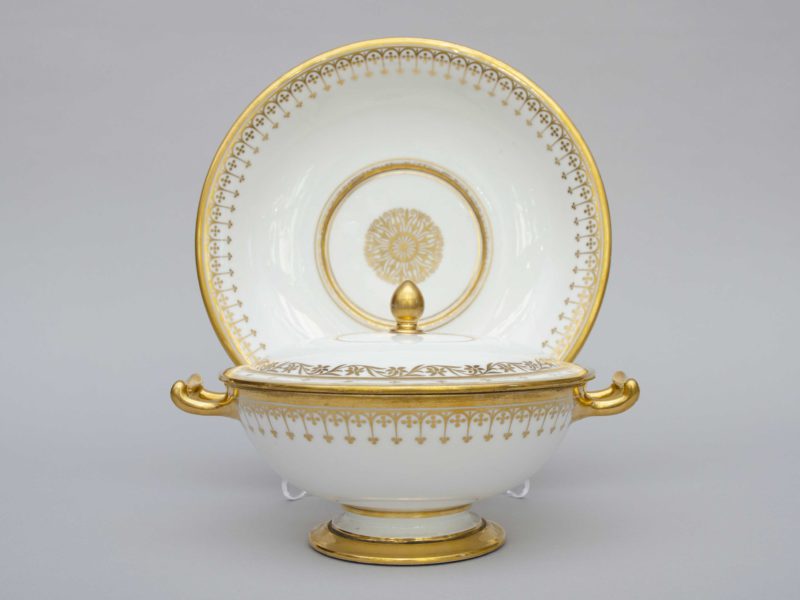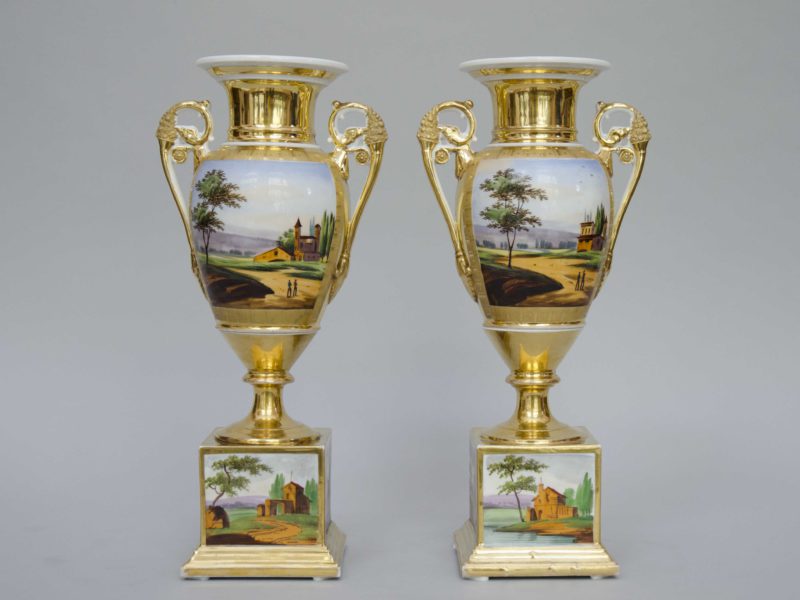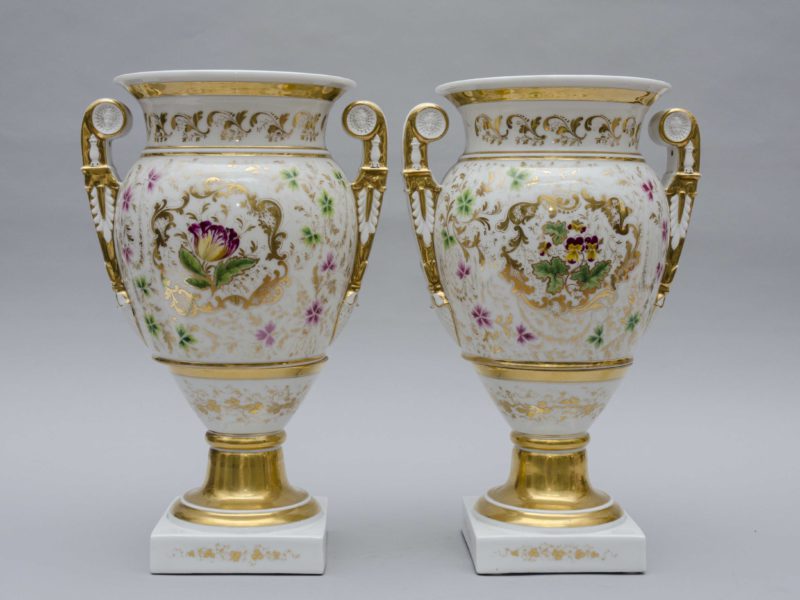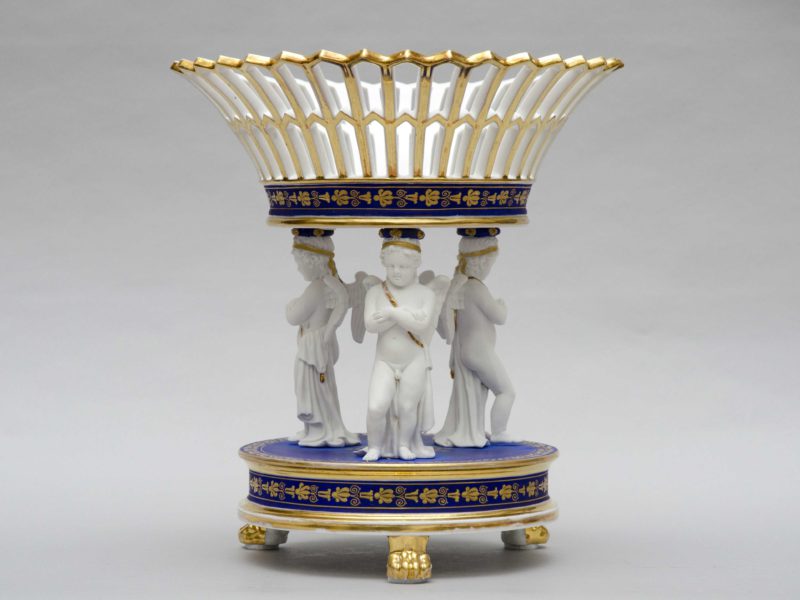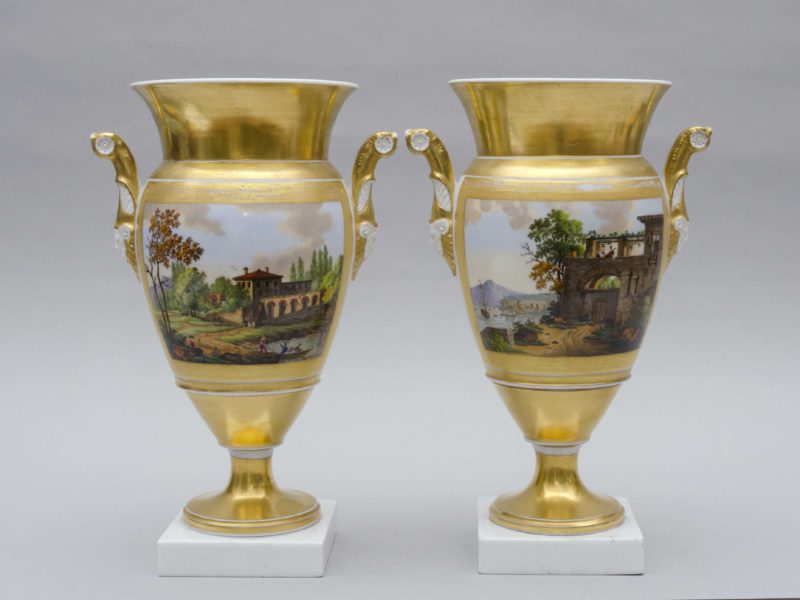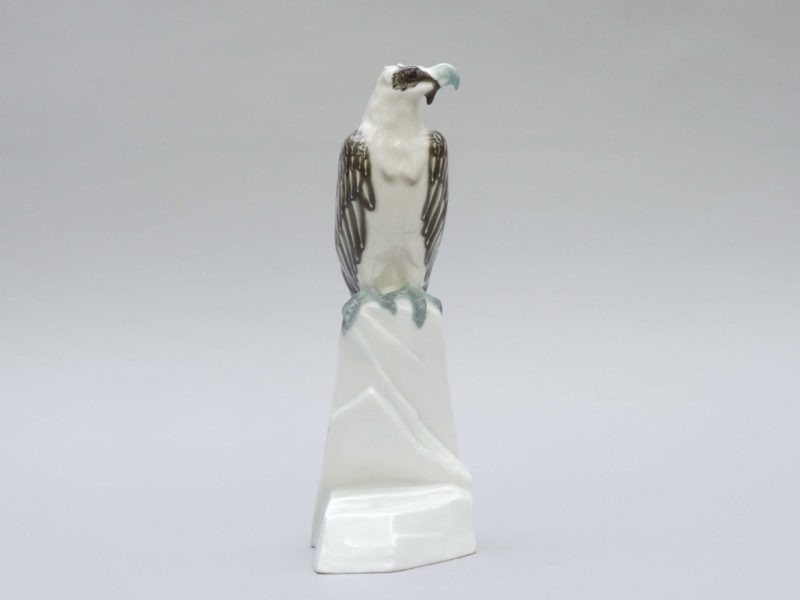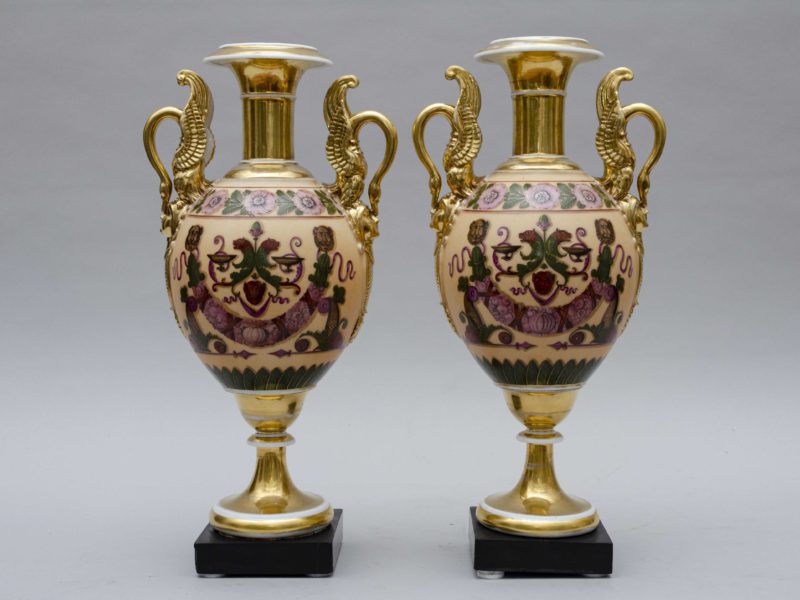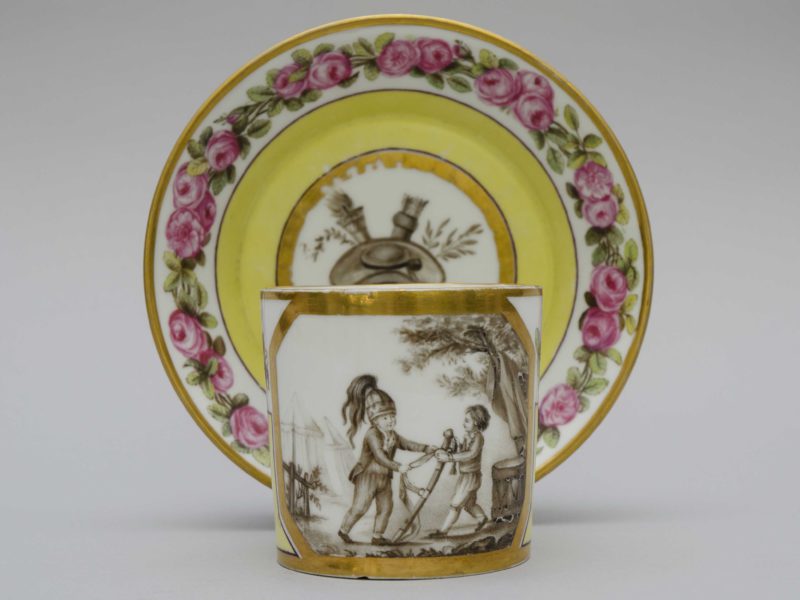Hentschel child, Meissen
Out of stock
One Hentschel child at play. A boy with a newspaper hat is riding a wheeled wooden horse. Pfeiffer period, 1824-134. The newspaper is dated 1933! Modelled in 1905 by Konrad Hentschel for the Meissen manufactory.
Size: H: 17.5 cm
Manufactory of Meissen, Art nouveau period.
Lit: Konrad Hentschel was born on 3 June 1872 in Cölln near Meissen. He is the son of the porcelain painter Ernst Julius Hentschel (1843-1928) who also worked extremely creatively in Meissen from 1861 to 1914 in the fields of new paste-on-paste and hot colour painting. He married Emma Auguste Clauss (1843-1921), the mother of their two sons, Rudolph and Konrad.
Konrad studied drawing at the Meissen manufactory. From 1891 to 1893, he studied sculpture at the Academy of Fine Arts in Munich under Professor Wilhelm von Rümann. He returned to the Meissen Manufactory as a “bossier”, went on a study trip to Italy in 1896 and became a model designer at the manufactory. From 1899 to 1901, he studied sculpture at the Academy of Arts in Dresden with Professors Karl Heinrich Epler and Robert Diez. In 1900, he was awarded an academic prize, the “Great Silver Medal”. At the same time, he remained attached to Meissen, for whom he created the “Crocus” tea and coffee set (1896) for the 1900 Paris Universal Exhibition (probably in collaboration with his brother Rudolf). Konrad Hentschel gradually developed children’s figurines from 1904 to 1907. Despite his bachelorhood, he captured the magical world of the playing, natural and independent child. Konrad and Rudolph (also a modeler in Meissen), the Hentschel brothers, have flourished under the artistic direction of the young Erich Hösel since 1903. This group will blow a new life on the aesthetic appeal of the Jugendstil creations. He died young, at only 35 years of age, on 8 July 1907 of a “heart attack” in Meissen.
Lit: Meissen was founded in 1710 in the gothic Albrechtburg castle. It was the first porcelain manufacturer in Europe. The previous year, in German Dresden, the alchemist Johann Friedrich Böttger, “goldmaker” and prisoner of Augustus the Strong (Elector of Saxony and king of Poland) had made the discovery. Initially the factory made fine red Böttger stoneware, with relief and engraved designs. The first true porcelain, put on the market in 1713, was similar in style, in the form of teaware, statuettes and Chinese style figures. From 1720, the porcelain became brilliant white, the enamel colours were improved, the designs were fantastic “chinoiseries”; it was the era of the painter-decorators with J. G. Höroldt as a leader. In the 1730s under the Count Brühl’s directorship (until 1752), the sculptors, with J.J. Käendler at their head, became dominant, producing a range of characters, animals and birds, dinner services richly decorated in relief, and sculptural vases and tablewares. From 1756-1773 meissen porcelain was marked with the crossed swords with a dot in between the handles, known as the “dot-period”. This period marked the transition towards the neo-classical style. In 1774 Count Camillo Marcolini became director, he held this position until 1814. The more restrained neoclassical style dominated but the manufactory declined due to economic pressures and the international competition of the French factory Sèvres. In the early 19th century, technical innovations were introduced and the wares were made in the popular taste which improved the situation again. In 1830 the name of the factory was changed from Königliche Manufaktur to Staatliche Porzellan Manufaktur. Superb modelling and painting were characteristic of Meissen porcelain, and for the next 50 years its products were unsurpassed, widely exported and much imitated. Throughout the 19thC, Meissen quality remained unchanged and there were few innovations, although the late 1890s and early 1900s saw the start of a more inventive approach in the Art Nouveau manner. The Meissen factory is still operational today.
Out of stock
Contact us